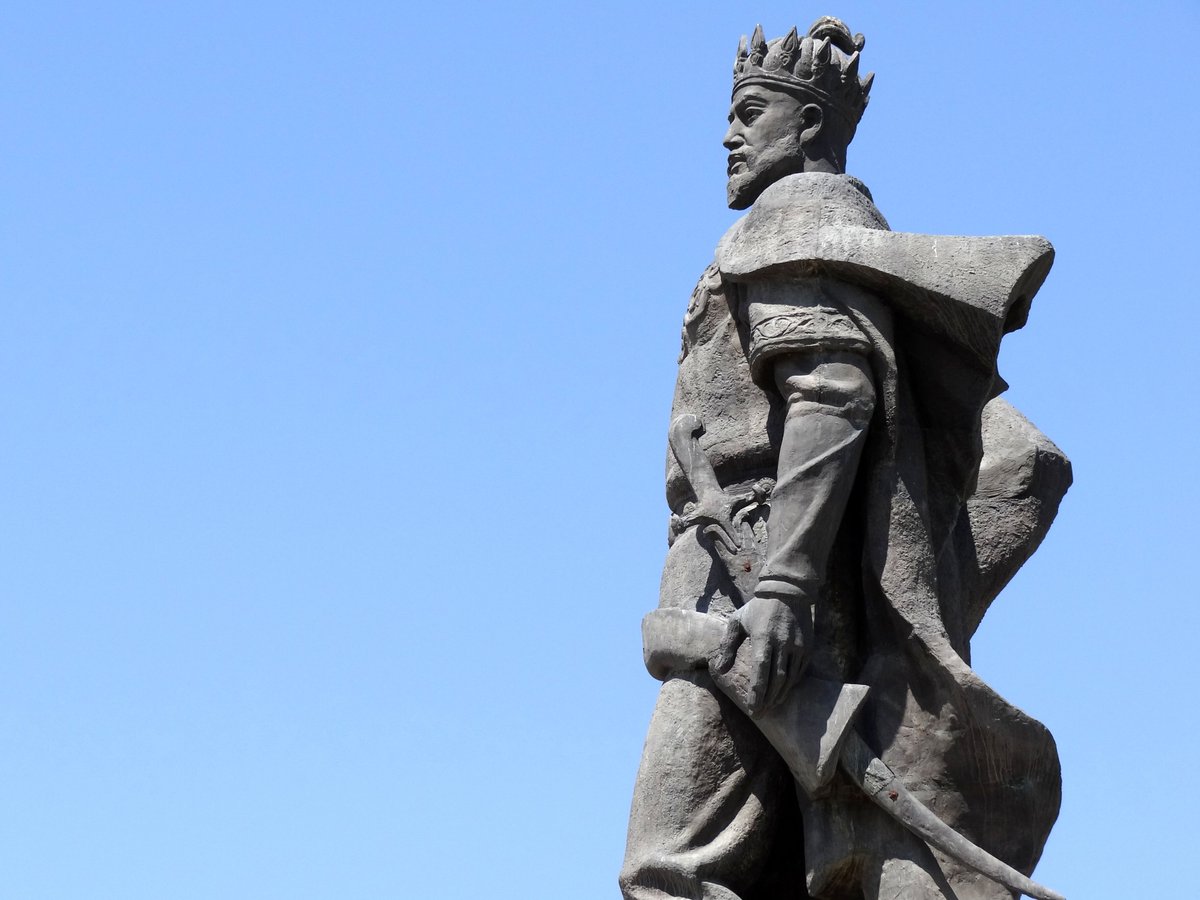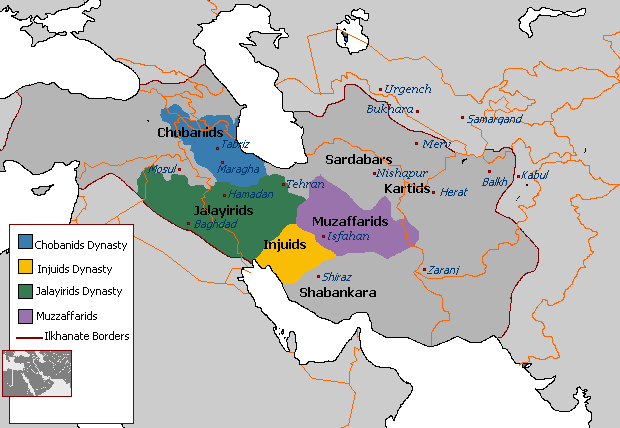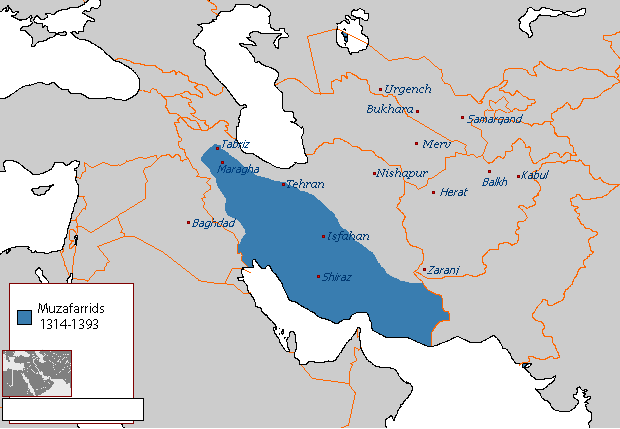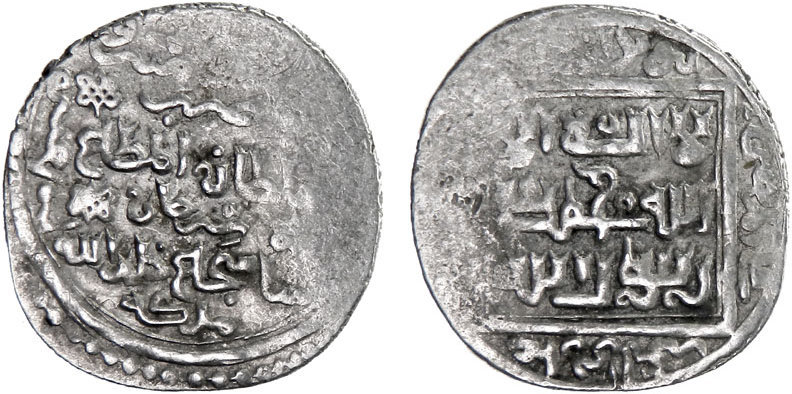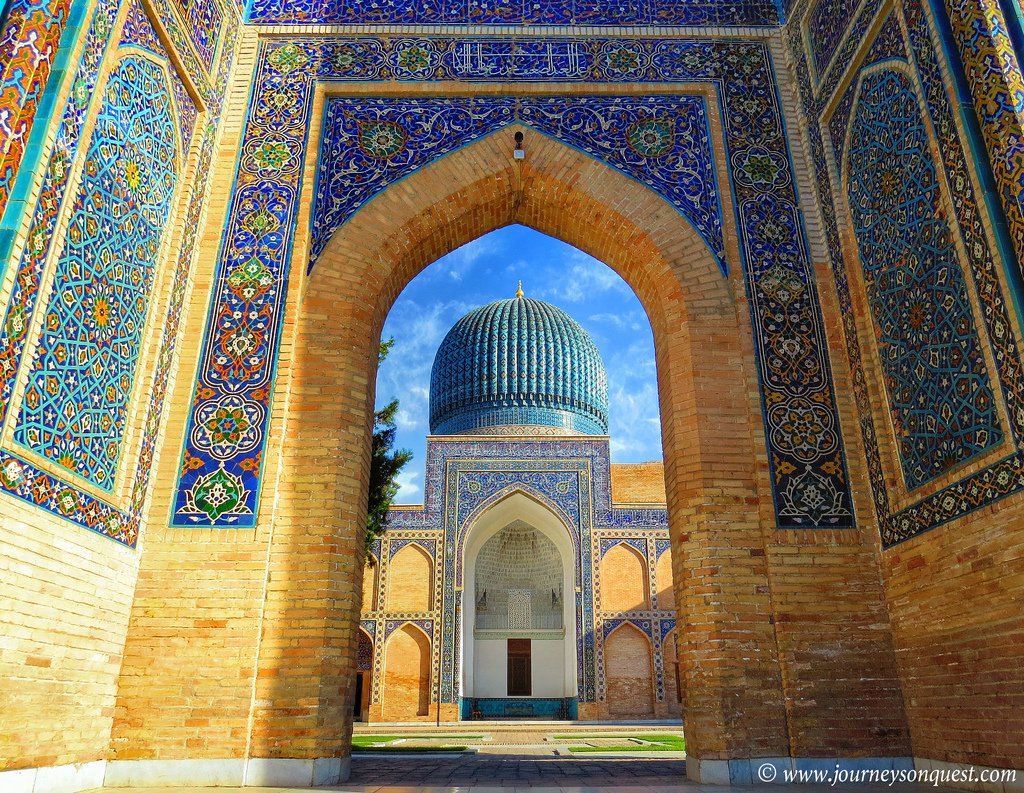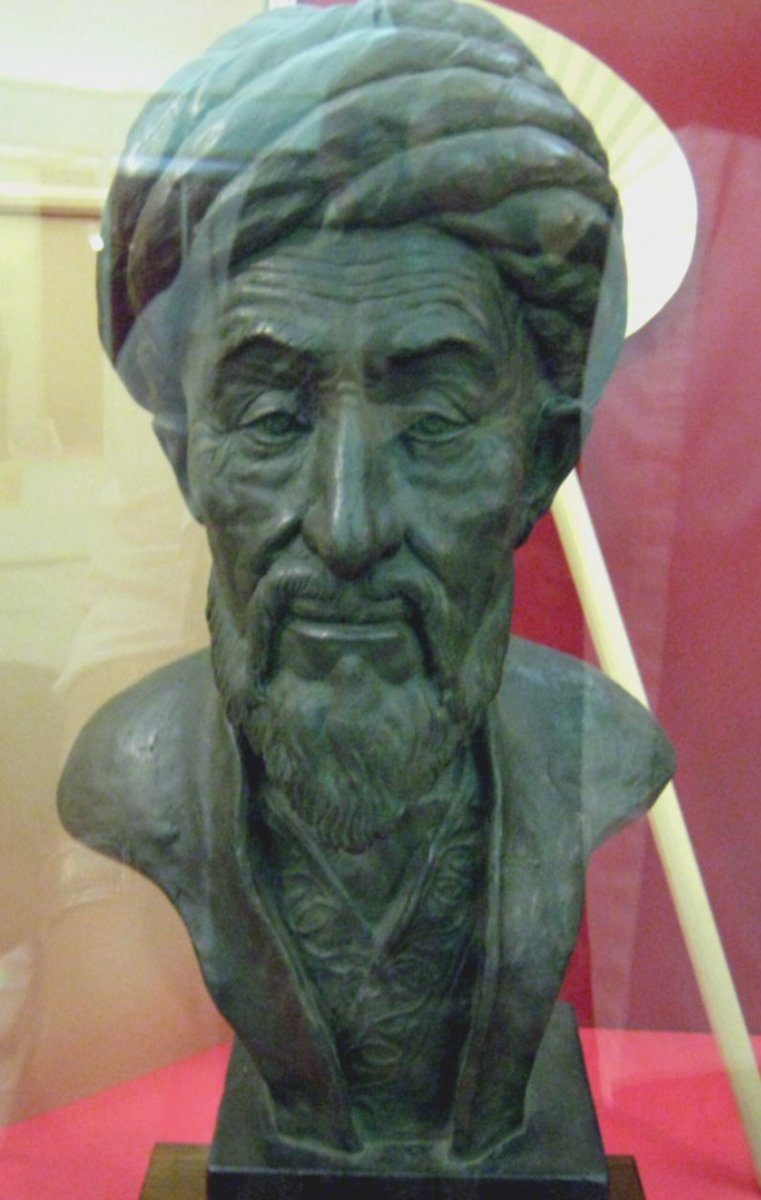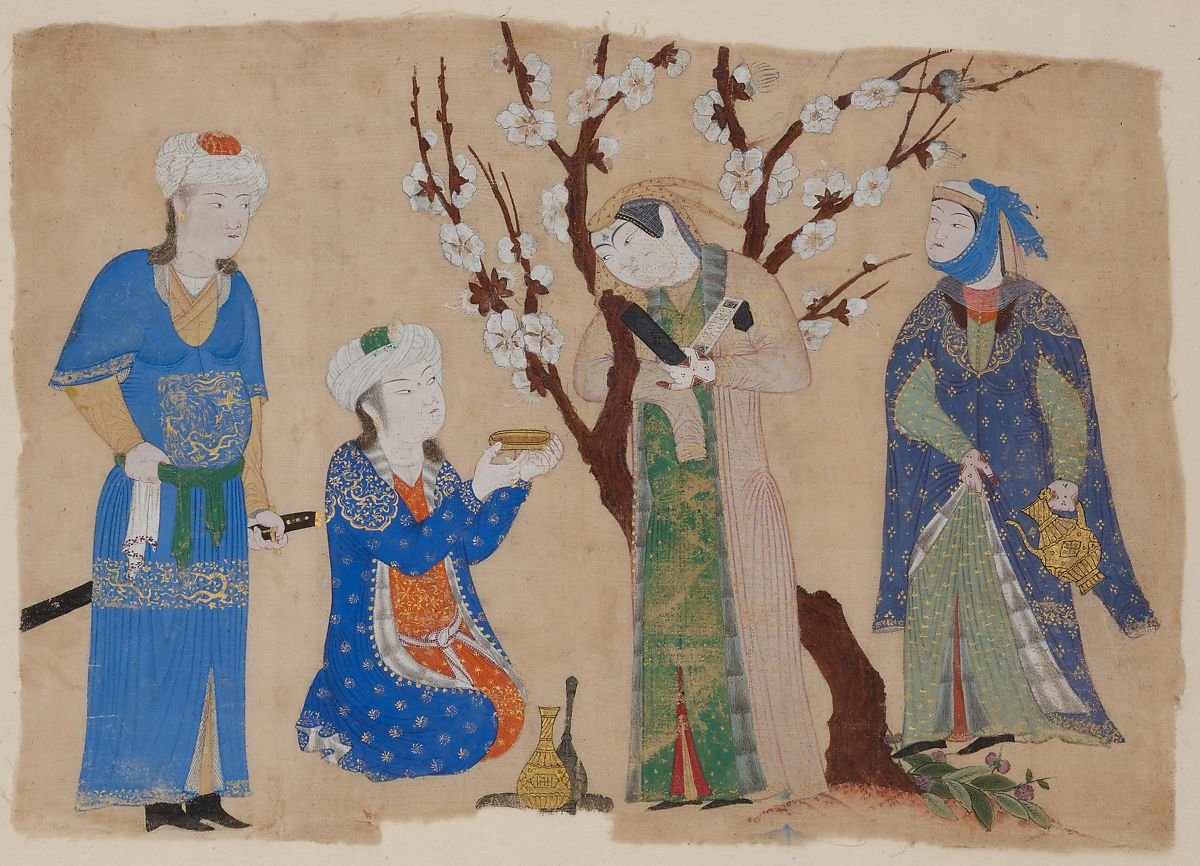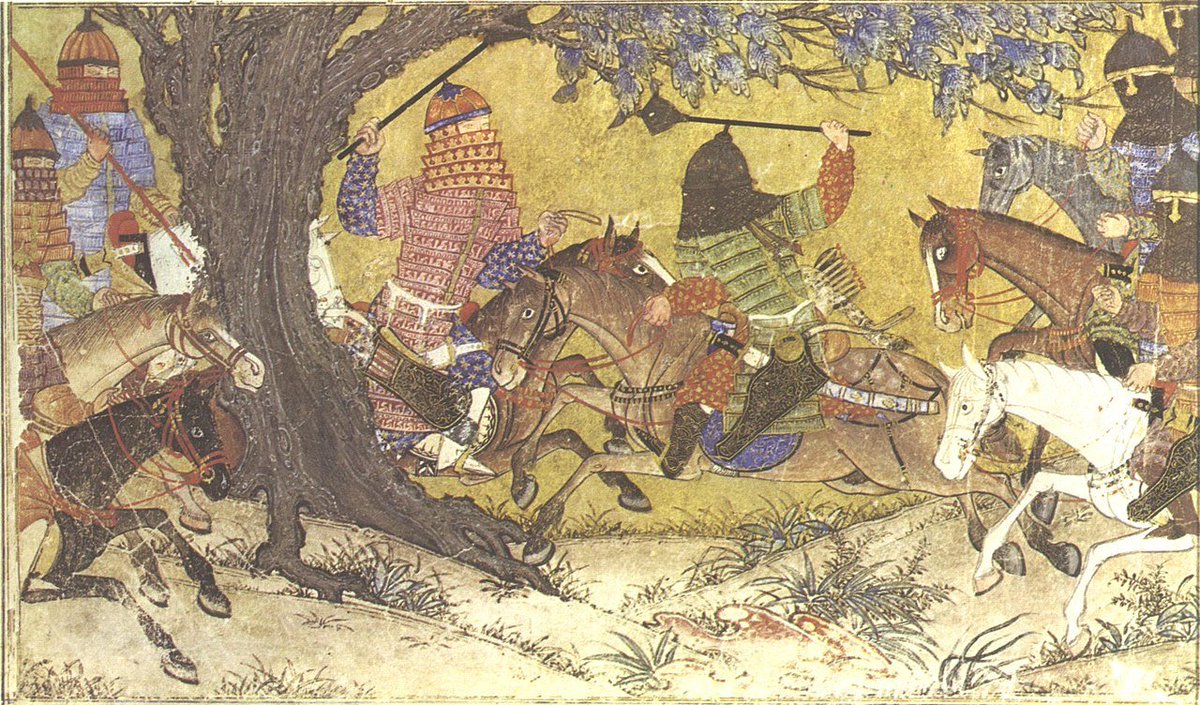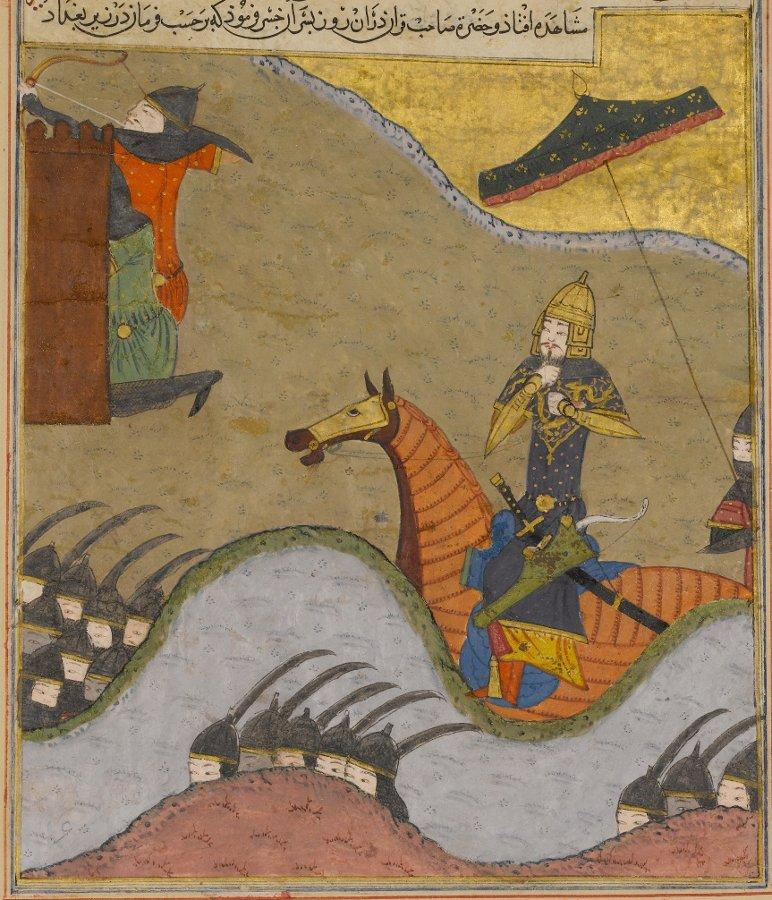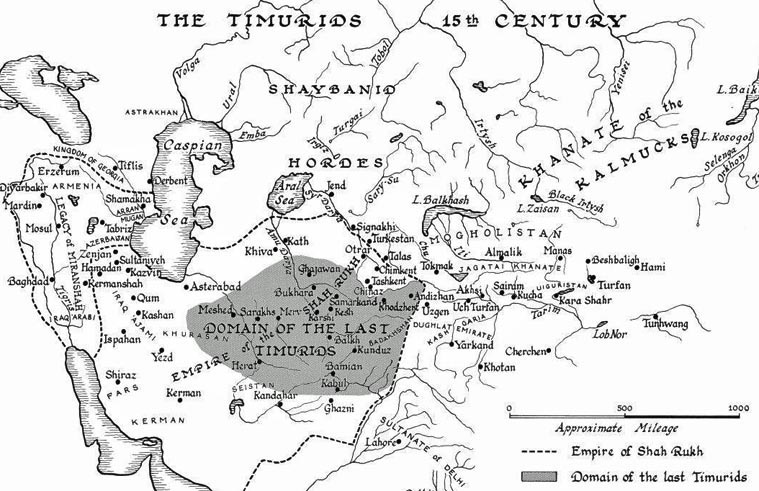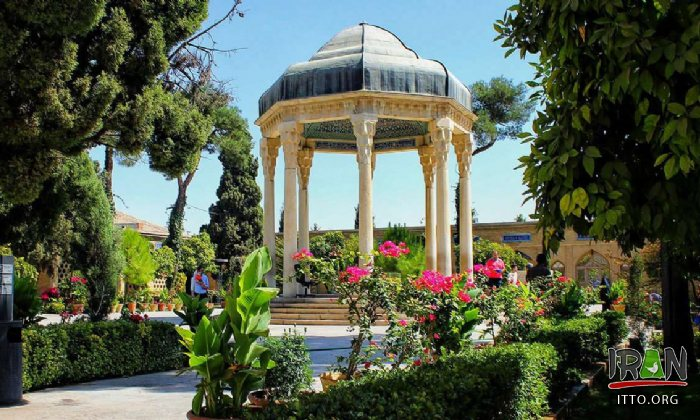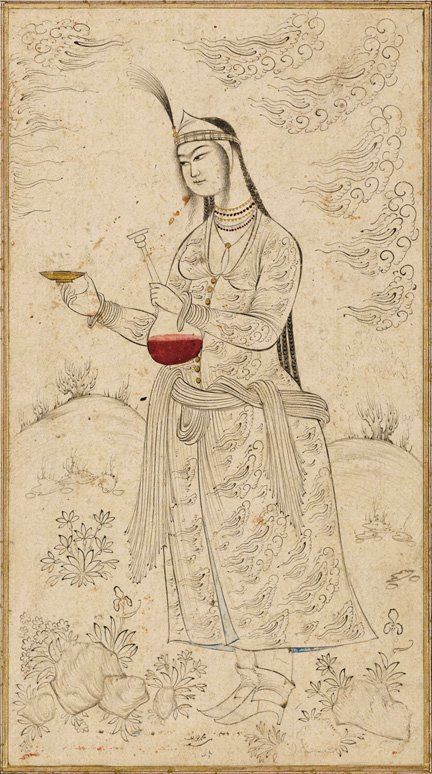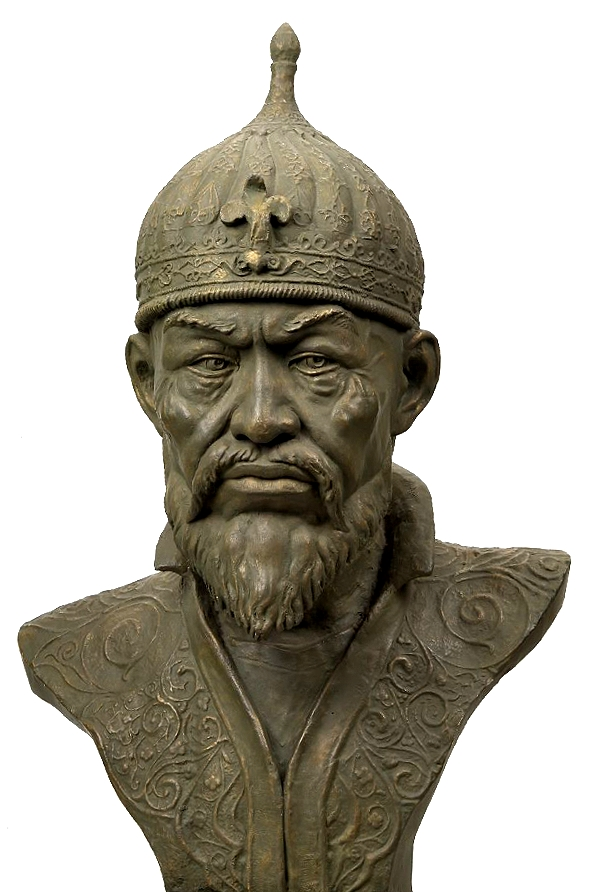This is @fran__olmos and as we said yesterday, today we will look into Timur’s conquest of Western Iran. Prepare yourselves for the fall of great cities in the hands of the conqueror, the verses of Hafez and, as expected, more battles and blood fo/1
After Timur’s occupation of Eastern Iran, the conquest of Western Iran would take over a decade. With comings and goings, it is hard to follow a chronological order to his campaigns, so instead we will focus on his conquest of the Muzaffarids and Jalairids fo/2
The Muzaffarid dynasty emerged after the fall of the Ilkhanate and controlled large parts of central and western Persia from their capital Shiraz. Their ruler Shah Shuja (1366-1384) became Timur’s vassal and placed his successors under his protection fo/3
Upon his death, Shah Shuja divided his territories among his sons, nephews and brothers, who soon quarreled among themselves and didn’t submit to Timur. This was the excuse the conqueror need, so in 1387 he invaded Muzaffarid territory fo/4
The governor of Isfahan opened the city to Timur, who occupied it peacefully. However, during the night the inhabitants rose up, killing any Timurid official and Transoxianan soldier they could find in the streets. They clearly hadn’t learned their lesson fo/5
Timur, furious at this treachery, ordered a general massacre with quotas of heads per army unit. Around 70,000 skulls “were piled in heaps outside the walls and of which towers were then built in various parts of the town” fo/6
From Isfahan, Timur proceeded to Shiraz, from where the Muzaffarid ruler fled. The city surrendered without a fight and Timur held court. The conqueror then ordered the deportation of the most skilled Shirazi artisans, who would embellish his capital of Samarkand fo/7
After this, Timur had to leave to fight the Golden Horde and didn’t return to Iran until 1392. In the meantime, a Muzaffarid named Mansur dispossessed his relatives (blinding, killing) and united much of the kingdom. He went as far as to defy Timur. A battle ensued fo/8
Both armies met in 1393 in the outskirts of Shiraz. It is said that during the battle Mansur Shah personally attacked Timur, but his blows met with Timur’s helmet. Mansur was defeated and later executed by Timur’s teenage son, and successor, the wise Shahrukh fo/9
Timur entered Shiraz triumphantly, where “the good red Shiraz wine was presented in golden cups by the prettiest girls in the city.” He received the submission of other Muzaffarid princes, who he later killed. Artists and scholars from Fars were deported to Samarkand fo/10
After occupying the rest of the Muzaffarid territories including Isfahan and Hamadan, he marched further west to finish off the last remaining dynasty in Iran, the Jalairids fo/11
The Jalairids were a dynasty of Mongol origin that carved themselves a significant sultanate, from Basra to Tabriz. At the time of Timur’s invasion their ruler was Sultan Ahmed, a poet who was more an Arabo-Persian than a Mongol conqueror fo/12
Back in 1386 Timur had already occupied Tabriz, forcing Sultan Ahmed to flee to Baghdad. This time, Sultan Ahmed fled once again and sought refuge with the Mamluks in Egypt. Baghdad was occupied peacefully and Timur continued with his conquests fo/13
However, Sultan Ahmed wouldn’t give up so easily. In 1394, with Mamluk help, he returned to Baghdad. Timur was engaged elsewhere and only dealt with him in 1401. Once again, Sultan Ahmed fled to Egypt but this time his officers decided to make a stand in Baghdad fo/14
The defenders put up a fight, which only made things worse. Whereas 7 years earlier Baghdad was treated with moderation, this time Timur ordered a general massacre. 90,000 of its inhabitants were murdered, with men of letters being spared, and buildings destroyed fo/15
Therefore, after almost two decades since he entered Iran, Timur had completely wiped the dynasties that had filled the vacuum left by the Ilkhans. Timurid rule would extend until the end of the 15th century in the east and Khorasan fo/16
Footnote: the great poet Hafez lived in Shiraz during the Muzaffarids and even wrote verses about its ruler Shah Shuja. A well known legend narrates an encounter between Hafez and Timur during the latter’s first conquest of Shiraz in 1387 fo/17
Timur was furious with Hafez for the following verses the poet had written: “If that Shirazi Turk accepts my heart in their hand, for their Indian mole I will give Samarkand and Bukhara.” fo/18
"I have subjugated most of the habitable globe... to embellish Samarkand and Bukhara, the seats of my government; and you would sell them for the black mole of some girl in Shiraz!" said the conqueror fo/19

 Read on Twitter
Read on Twitter